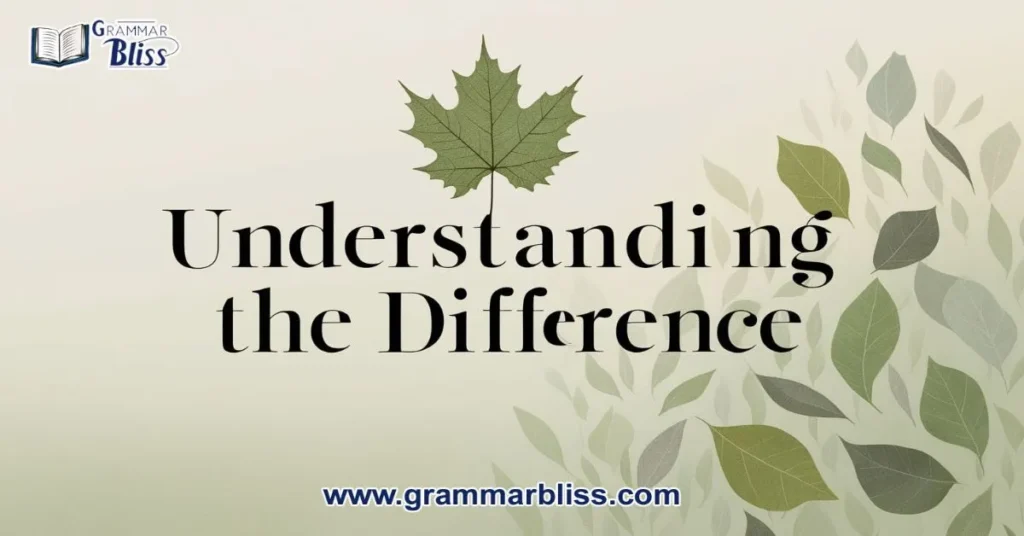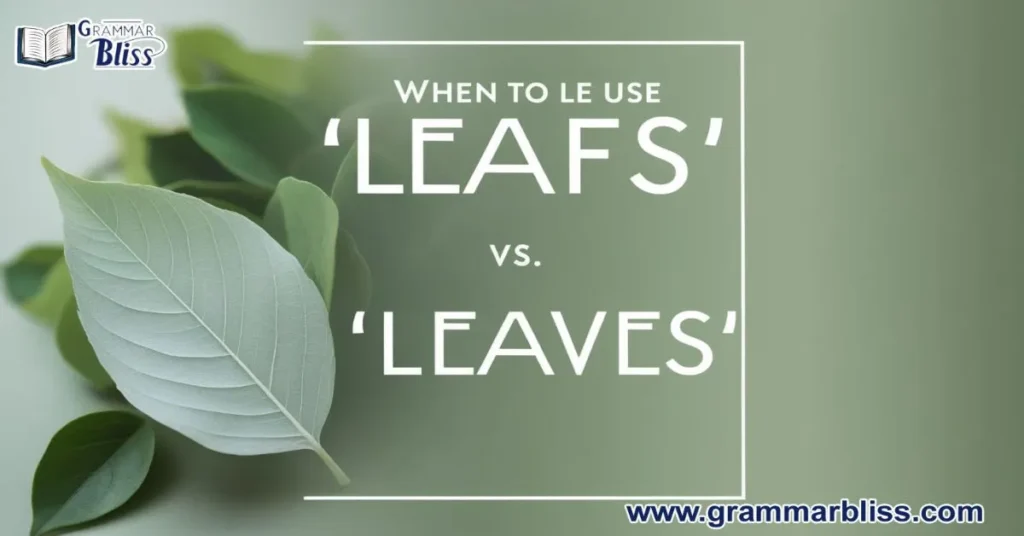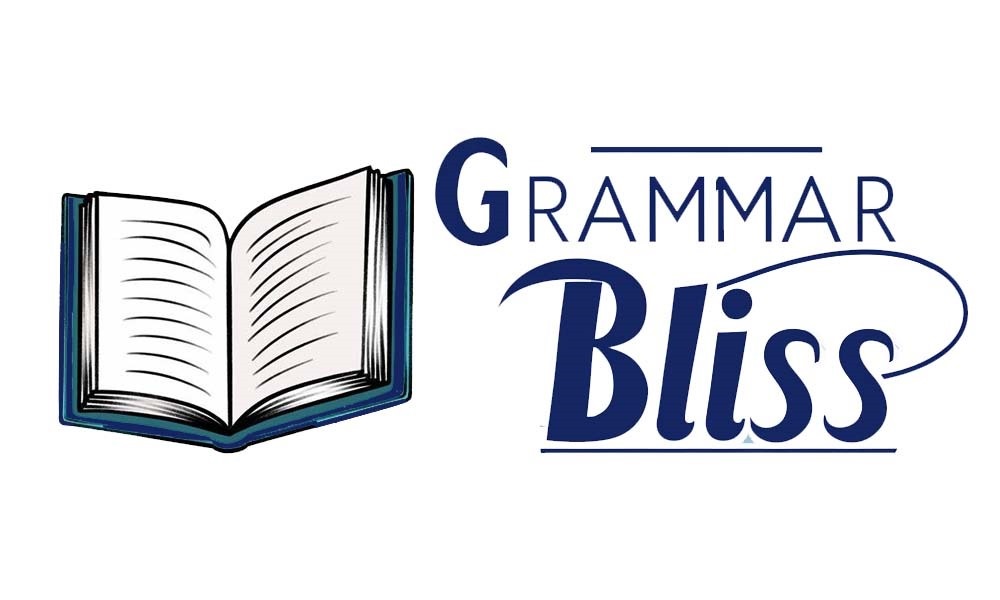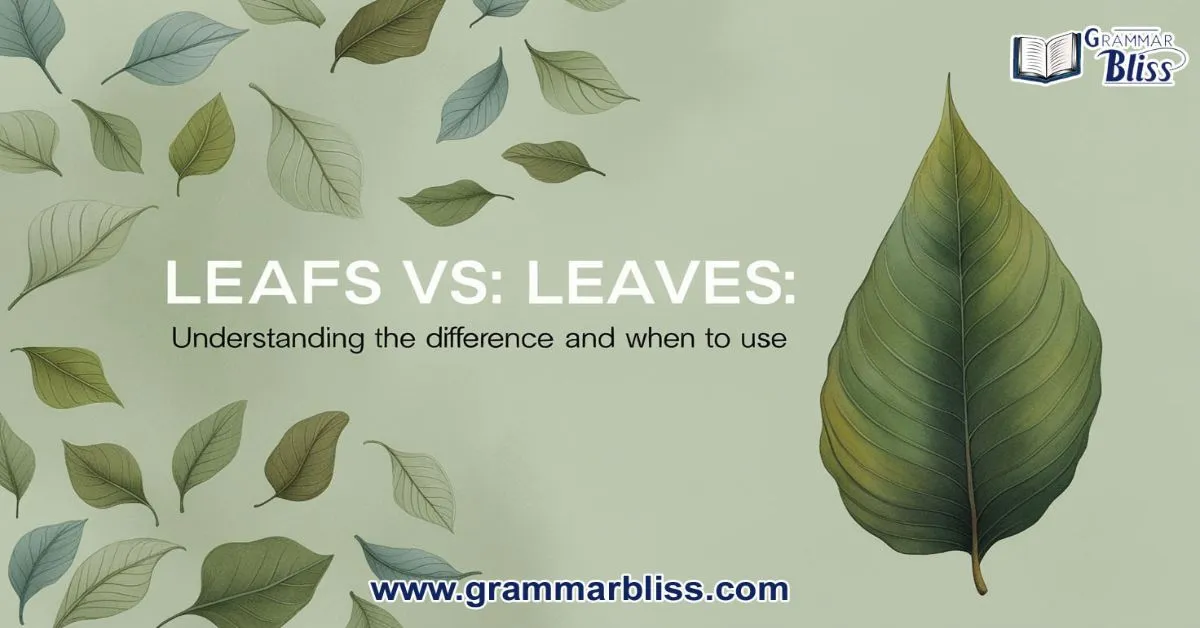When it comes to “Leafs vs. Leaves,” understanding the difference can seem tricky, especially when it comes to English grammar. While leaves is the standard plural form of leaf, Leafs appears as an exception in certain cases.
The most notable of these is the Toronto Maple Leafs, where the word is used as a proper noun to refer to the iconic hockey team. This seemingly irregular plural form follows its own rules, challenging the typical naming conventions.
Here we’ll explore the linguistic nuances, the etymology, and contextual usage of both terms to help you navigate this common grammar error and use them correctly.
Quick Summary
At first glance, “leafs” and “leaves” might seem interchangeable, but the truth is, they are not. In most cases, “leaves” is the correct plural form of “leaf”, referring to the foliage of a plant. However, “leafs” is used in specific contexts, primarily as a proper noun, such as in the name of the famous Toronto Maple Leafs hockey team. This distinction may seem small, but understanding it is important for both grammatical accuracy and clarity in communication. Now let’s dive deeper into the differences, history, and correct usage of these two terms.
Read: 50-sentences-of-can-when-to-use-modal-verb-can/
Understanding the Difference

The singular form of the word “leaf” refers to a flat, green part of a plant or tree. When you want to talk about more than one, the general rule in English grammar is to add “es” to make the plural. So, the plural of “leaf” is “leaves”. This follows the standard rule for making nouns plural in English, where you change the vowel and add an “s” or “es”.
However, “leafs” is not the typical plural form. Instead, it is an exception. “Leafs” is mostly used when referring to proper nouns, such as the name of a sports team. For example, the Toronto Maple Leafs is a proper noun, and its name is a grammatical exception to the usual rule.
In most other cases, when talking about multiple leaves from a tree or plant, the correct form is “leaves”. There is no reason to use “leafs” unless you are referring to a specific proper noun.
Etymology and Evolution
The story of “leaf” begins in the linguistic history of English. The word “leaf” comes from Old English “lēaf,” which was used to describe the flat, green parts of plants. Over time, the evolution of the language changed how we formed the plural of certain words.
In the case of “leaf”, English followed an irregular plural pattern, which is common with words that change their internal vowel sound when pluralized. Just as “wolf” becomes “wolves” and “knife” becomes “knives,” “leaf” becomes “leaves”. This change is known as a vowel shift in English.
Despite this, “leafs” came into use as a branding choice, particularly in the case of sports teams like the Toronto Maple Leafs. These kinds of language exceptions are common in English, where names or brands sometimes follow their own language rules rather than standard pluralization methods.
Real-Life Examples
To understand the difference more clearly, let’s look at some real-life examples.
When talking about plants, nature, or the parts of a tree, you would use “leaves”:
- “The leaves on the oak tree turned yellow in the fall.”
- “I picked up the leaves from the yard yesterday.”
On the other hand, “leafs” is used as part of a proper noun, like a sports team’s name:
- “The Toronto Maple Leafs are playing in the finals.”
- “Did you watch the Leafs game last night?”
This helps clarify when you should use “leaves” (for plural of leaf in the general context of plant foliage) and when to use “leafs” (when referring to the Toronto Maple Leafs or other proper nouns).
When to Use “Leafs” vs. “Leaves”

The rule is simple once you understand the contexts. Generally, “leaves” is the correct form for multiple leaves on a plant or tree. For example, in botanical discussions or everyday usage, we refer to the leaves of a tree.
However, “leafs” should only be used when talking about proper nouns. The most common example is the Toronto Maple Leafs hockey team, which has its name based on a naming convention that uses “leafs” instead of “leaves.” This is an exception to the grammar rules for pluralization.
Learn: messege-vs-message-which-one-is-correct/
Side-by-Side Comparison
To help you remember, here’s a quick comparison between “leafs” and “leaves”:
| Term | Grammatical Role | Common Usage | Example |
| Leafs | Proper noun | Team names, brand names | “The Toronto Maple Leafs are playing well.” |
| Leaves | Plural form of “leaf” | Botany, idiomatic expressions | “The leaves fell in autumn,” or “Turn over a new leaf.” |
This table highlights the differences clearly and helps solidify the idea of when and where each term is used.
In-Depth Analysis of Usage Scenarios
The use of “leafs” and “leaves” is mostly about context. In botanical contexts, “leaves” is almost always the correct term. You would use “leaves” when referring to a tree’s or plant’s foliage, or when talking about idiomatic phrases like “turn over a new leaf.” The only time you’d use “leafs” is for proper nouns—such as the Toronto Maple Leafs.
Contextual Usage
Using “leafs” or “leaves” depends on the surrounding context. When discussing plant biology or nature terminology, always use “leaves”. However, in a sports or brand context, “leafs” is the correct choice.
Explore: shown-vs-showed-lets-clear-up-the-confusion/
Grammar Rules and Examples
Here’s a quick rundown of the grammar rules:
- “Leaves” is the standard plural of “leaf”.
- Use “leaves” when discussing plant parts or nature.
- “Leafs” is only used for proper nouns, like Toronto Maple Leafs.
FAQ’s
What’s the difference between Leafs vs Leaves?
Leaves is the plural of leaf, while Leafs is a proper noun used for the Toronto Maple Leafs.
Why is “Leafs” used for the hockey team?
The Toronto Maple Leafs used Leafs for branding consistency, defying the usual grammar rules.
Is “Leafs” grammatically correct?
Leafs is correct when referring to proper nouns, but not as the plural form of leaf in general language.
When should I use “Leaves”?
Use leaves when referring to plant foliage or in a botanical context.
Are there other exceptions in grammar like “Leafs”?
Yes, proper nouns sometimes break standard pluralization rules, like Toronto Maple Leafs.
Conclusion
Understanding the difference between “Leafs” vs. “Leaves” is essential for clarity in both writing and conversation. While leaves is the standard plural form in a botanical context, Leafs is an accepted exception, primarily used in proper nouns like the Toronto Maple Leafs. By recognizing these language rules and the irregular plural patterns, you can avoid common grammar mistakes and communicate more effectively. Whether you’re discussing plant foliage or sports teams, knowing when to use each form will ensure language accuracy and clarity.

